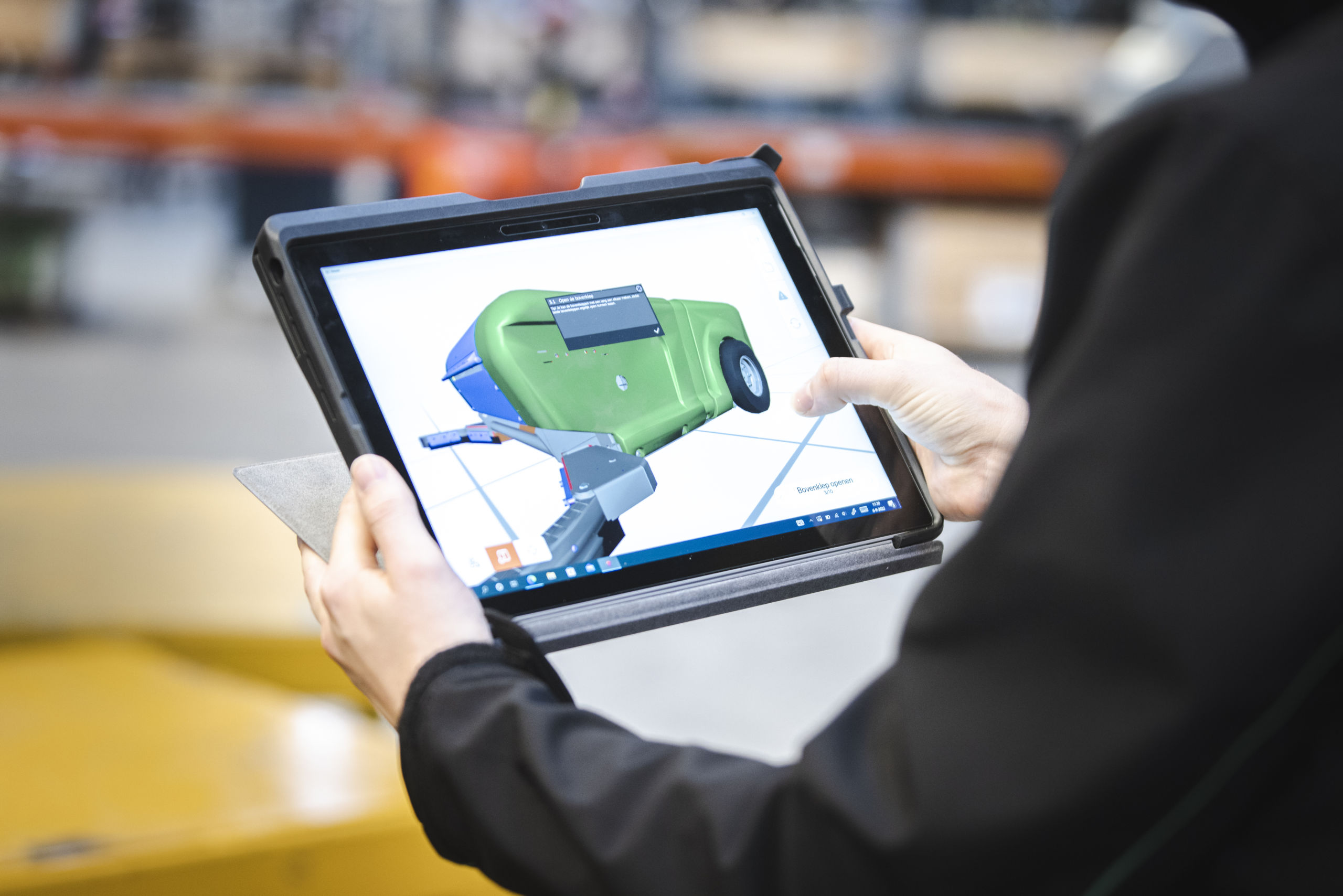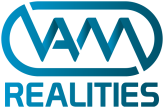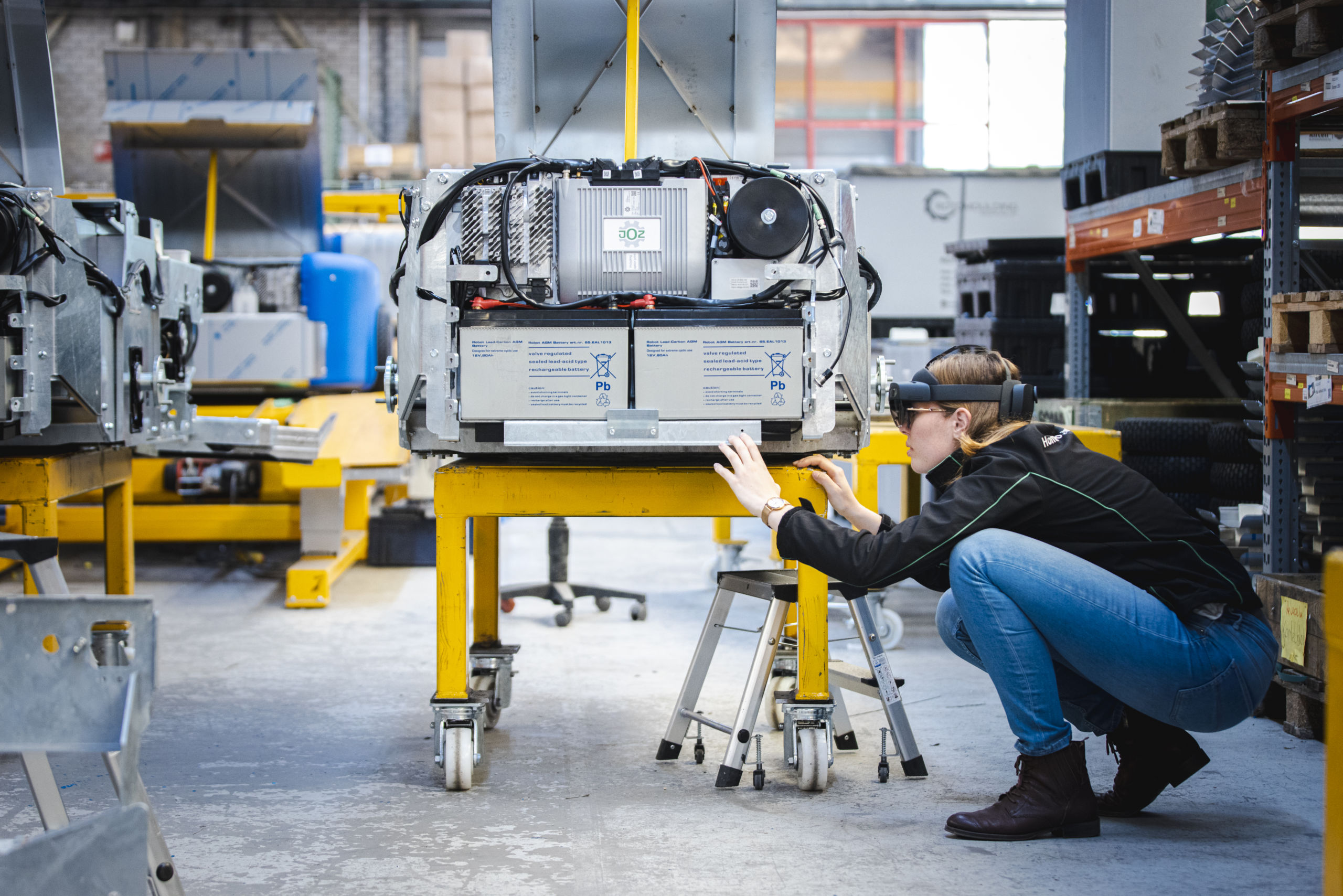
Almost two years ago, JOZ (a Dutch developer of smart stable solutions) launched an innovative manure robot called Barn-E. The robot has been a great success and is sold through a dealer network throughout Europe and North America. To further improve service to all international dealers and their mechanics, the Westwoud-based company is investigating whether Augmented Reality (AR) can play a role in this. And that provides to be an interesting endeavour.
JOZ specializes in developing products that make farmers’ work easier and improve animal welfare. Barn-E is a good example of this, says product trainer Katinka de Rooij. ,,This revolutionary robot automatically cleans dense barn floors by picking up the manure and taking it to a storage area, instead of shoveling it in front of it. We don’t sell our products to farmers ourselves. This is done by local dealers. They are also responsible for service and maintenance. That means we train dealers and their mechanics from different continents and time zones to work with our products.”
Online training portal
Before corona, dealers and mechanics were all trained at JOZ on site in Westwoud, Katinka explains. ”Such sessions lasted a week, including practical training in the stables. But then came the pandemic. It coincided with the launch of a number of new products, including Barn-E. Because of travel restrictions, we then switched to online presentations, but that didn’t turn out to be ideal. Especially with new products, you want to be able to give more hands-on guidance. That’s why we created the JOZ Academy: an online training portal that every dealer and mechanic can log into whenever they want. With interactive training courses, they can now improve their knowledge in a much more effective way. They learn what our products can do, how to install and maintain them, and how to troubleshoot. So the pandemic has led us to gaining accelerated experience with remote guidance and that tastes like more.”
Remote guidance
In fact, JOZ has a luxury problem, Katinka confesses. ,,The number of products we sell is growing, as is the number of countries where we distribute our products. To keep up with that growth in the coming years, we want to make remote guidance even easier and more attractive. After all, the more independent we can make our dealers and the more knowledge and understanding they have of the products, the better it is for them and the easier and less labor-intensive for us.”
The added value of augmented reality (AR)
So the desire to provide remote support and training and to optimize dealer service is growing. But how do you approach that? The use of augmented reality (AR) can be a solution for this. That’s why JOZ is investigating actively what the added value can be, Katinka explains with enthusiasm. ,,About five people from our organization are involved in an extensive AR-pilot. We have been given access to the Industrial Life Cycle (ILC) platform of Total Reality, partner of TechValley. This platform consists of an editor side and a view side. Barn-E’s construction drawings are loaded into the platform and while using the editor we can add instructions in a simple way. For example, how to replace parts. This goes per step. So the system will say: open this valve, now remove this part, commands like that. Users log in on the view-side with a tablet. They can point at the physical manure robot in front of them. With the tablet in hand, they walk around the robot and see the instructions projected onto the location where they need to perform the action. Mechanics are technical people who would much rather work with their hands than stare at a computer screen from behind a desk. The more hands-on they can learn, the better they understand and remember everything. And AR turns out to be a perfect solution for that.”
Happy farmers
AR offers possibilities not only for training. Virtual reality can also have great added value for dealers, Katinka believes. A salesman can, for example, show on the tablet in the cattle farmer’s barn how the manure robot will drive around in his barn, which space is needed to store the manure and which specifications the barn must meet. This makes the sales pitch much more clear. A farmer can almost feel how the product looks and works, which is much nicer. And the happier the farmer, the happier the dealer, and the happier we are.”
Future ideals
In the future, Katinka also sees opportunities in the area of product installation. ,,We already have ideas to use AR as an aid and guidance tool for the installation of new products, so that mechanics need less training. Getting that done is another fun, interesting challenge. The same goes for troubleshooting. That too will not be possible using AR for the time being, I think. Troubleshooting involves a lot of experience, and experience cannot be programmed in. But it is a nice idea for later. After all, how cool would it be if the mechanic arrives at the farmer’s house, loads data from the robot into his AR program and thus immediately sees where the robot has driven in the barn and what has gone wrong? That’s a very interesting addition for the future.”
Learning path
The pilot has been running for several months and Katinka and her colleagues have already learned a lot. ”We are doing practical tests and let people from our own organization work with it. What opportunities do they see? What works and doesn’t work? I notice that not everyone is immediately as enthusiastic about using such a new technology. Some are hesitant, while others are eager to get started. Under the guidance of Parbleu, we also consult with the other machine builders within TechValley who are participating in this pilot. It is interesting to hear what they are up against. By talking about this you help each other. That is very valuable.’’
Start-up problems
The practical tests so far reveal mainly small things, says Katinka. ,,Practical issues such as texts that were not easy to read, or problems with placing the markers correctly. We also noticed that we prefer to use a tablet. We also tested the HoloLens, but it proved too vulnerable in the environment in which our dealers and mechanics work. Moreover, a tablet is friendlier to purchase and less foreign to mechanics. We also notice that AR cannot yet do everything we want. The technology is not yet as far along as we would like it to be. It would be possible to make something very specific for our systems, but that is far too extensive. Our preference is to use a system that is standard.”
A complete story
One thing is certain, Katinka emphasizes. ”We need to gain a lot more experience before we can implement AR in practice. It has to work perfectly before we will even consider launching it at our dealers. So our aim for the coming months is to get a clear picture of what this technology is going to bring us and more importantly, what it is going to bring our dealers. We need to tie numbers to that and then present our plan to the management. In principle, they are positive about this kind of innovations, but if it doesn’t work out, we could also put it on hold for the time being. But if it does work, we will roll it out across many more of our products.”
This pilot, in the Netherlands, is a part of VAM-realities project (www.vam-realities.eu ).



